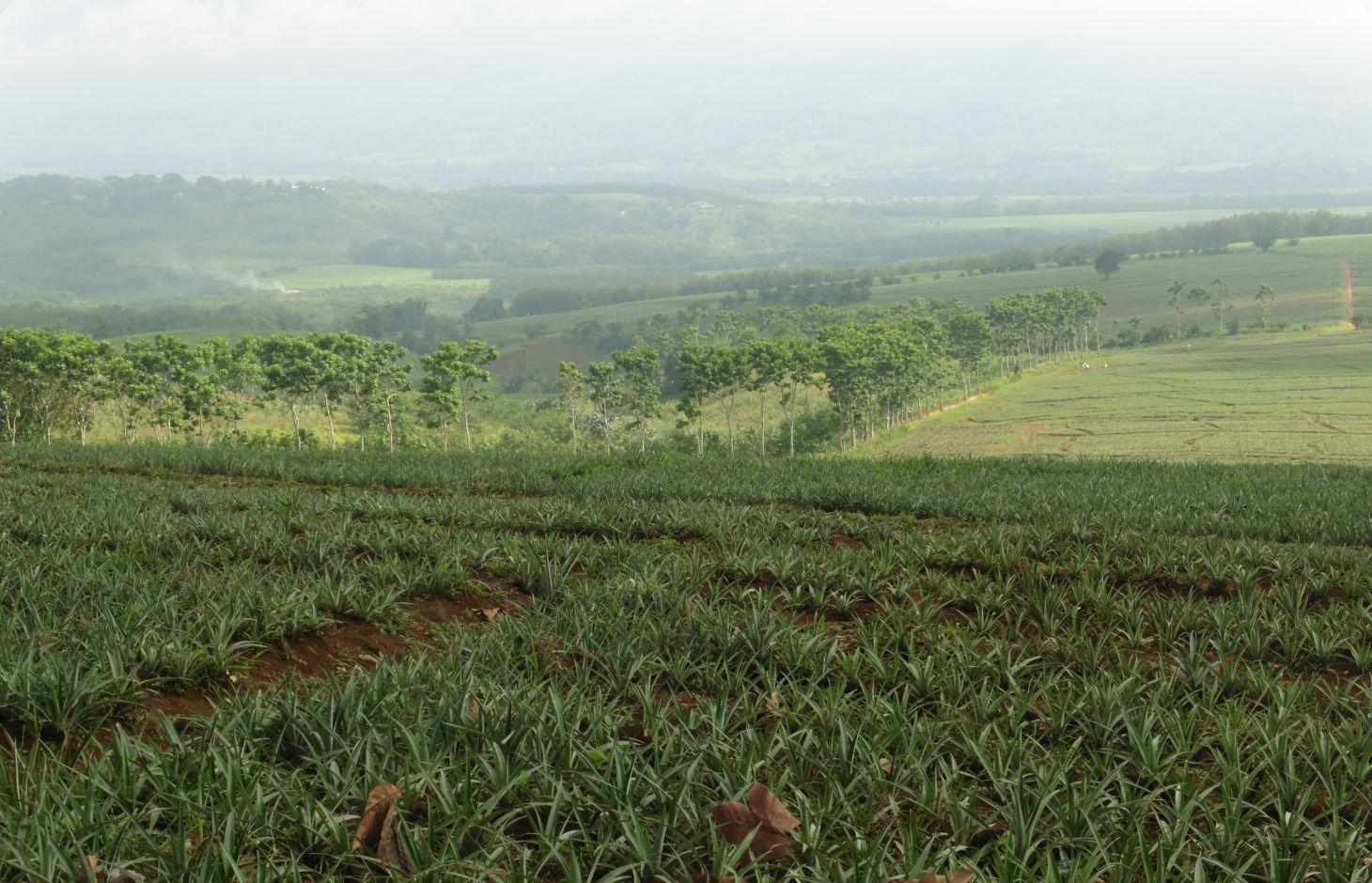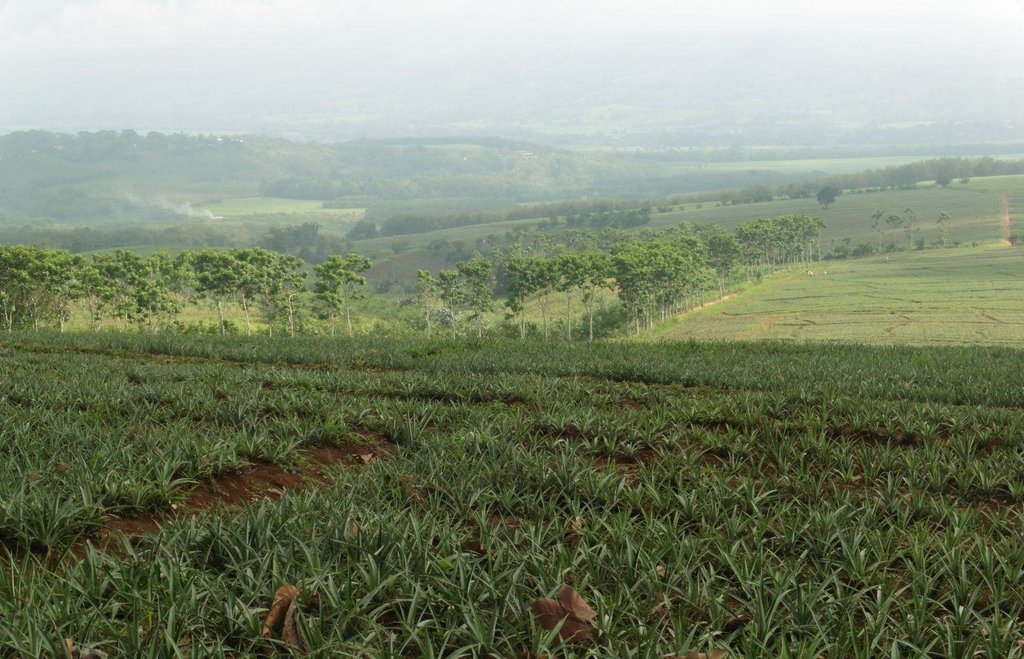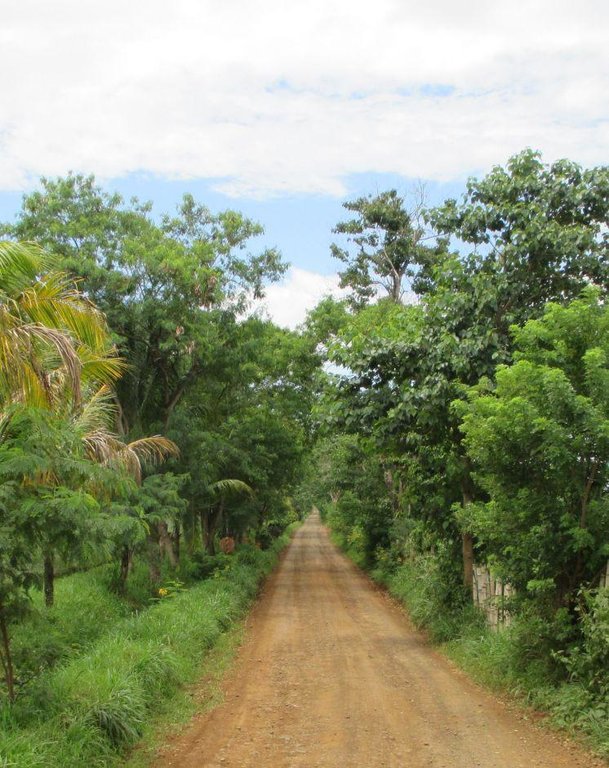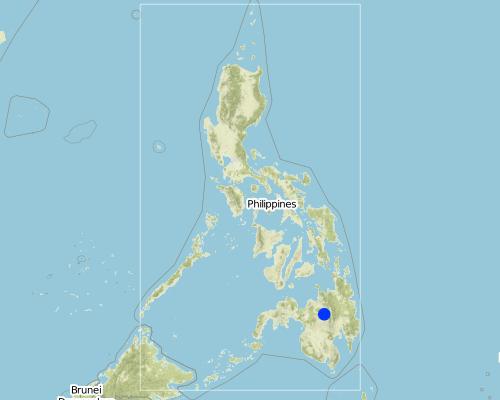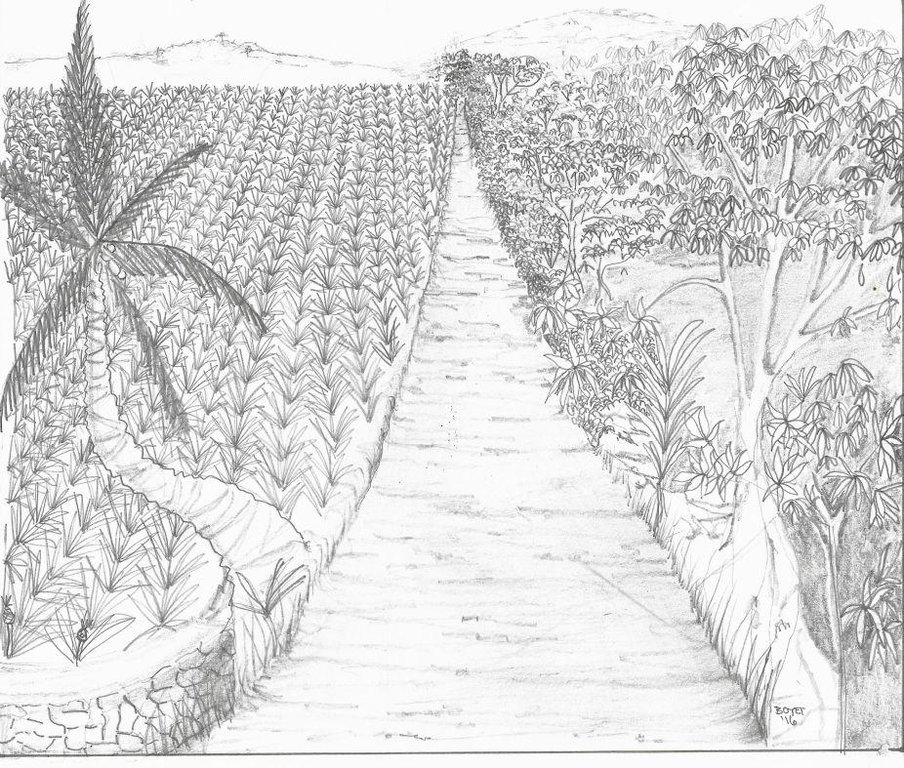Trees as Buffer Zones [Philippines]
- Creation:
- Update:
- Compiler: Philippine Overview of Conservation Approaches and Technologies
- Editor: –
- Reviewer: Fabian Ottiger
technologies_1709 - Philippines
View sections
Expand all Collapse all1. General information
1.2 Contact details of resource persons and institutions involved in the assessment and documentation of the Technology
Key resource person(s)
SLM specialist:
Manubag Jerry
(088) 221 4302
manubagjerry@gmail.com
Mt. Kitanglad Agri-Development Corporation
Lurogan, Valencia City, Bukidnon , Philippines
Philippines
Name of the institution(s) which facilitated the documentation/ evaluation of the Technology (if relevant)
Mt. Kitanglad and Agri Development Corporation (MKADC) - Philippines1.3 Conditions regarding the use of data documented through WOCAT
When were the data compiled (in the field)?
09/12/2015
The compiler and key resource person(s) accept the conditions regarding the use of data documented through WOCAT:
Ja
1.5 Reference to Questionnaire(s) on SLM Approaches
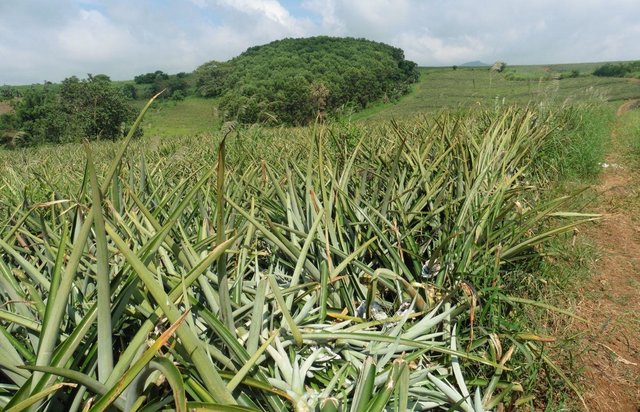
Integrated Soil and Water Conservation Approach in Improving … [Philippines]
Integration of soil and water conservation technologies primarily aim to protect the area from loss of biodiversity and land degradation.
- Compiler: Philippine Overview of Conservation Approaches and Technologies
2. Description of the SLM Technology
2.1 Short description of the Technology
Definition of the Technology:
Trees as buffer zones are vegetative measures established in the area to prevent pest from crossing in between blocks. Further, the technology provides haven for flora and fauna which are endemic in the area.
2.2 Detailed description of the Technology
Description:
Trees are planted at strategic locations along the road, between blocks, boundaries or in scattered areas within the pineapple plantation. Indigenous trees,"wildlings", which are considered endangered species were preserved in the plantation. Trees serve as habitat for the different tree of faunal species of birds, reptiles, amphibians and mammals.
Purpose of the Technology: It assimilates carbon from carbon dioxide in the atmosphere. It also provides shelter/habitat for wildlife species such as birds and temporary shades for laborer during rest time. The trees also improve the aesthetic value of the plantation.
Establishment / maintenance activities and inputs: The initial step is the identification of specific tree planting areas for supplementation of natural cover. Along road networks are usually utilized as buffer zones. Prior to planting, grass brushing is done followed by hole digging. Maintenance in the area includes brushing of grasses and pruning of the canopy by 5-6 laborers.
Natural / human environment: The area is under humid agro-climate condition with a topography ranging from 1-10% slope. It receives an average annual rainfall of approximately 3072 mm/year. The elevation ranges from 370-890 meter above sea level.
Mt. Kitanglad and Agri Development Corporation (MKADC) operates the area where the technology is being practiced. Farmers living within the area are the laborers of the company.
2.3 Photos of the Technology
2.5 Country/ region/ locations where the Technology has been applied and which are covered by this assessment
Country:
Philippines
Region/ State/ Province:
Valencia City
Further specification of location:
Bukidnon
Map
×2.6 Date of implementation
If precise year is not known, indicate approximate date:
- 10-50 years ago
2.7 Introduction of the Technology
Specify how the Technology was introduced:
- through land users' innovation
Comments (type of project, etc.):
The company integrated trees along roads and between blocks ,years later and trees were grown enough ( around 10 years) , they found its efficiency as habitats for endangered species.
3. Classification of the SLM Technology
3.2 Current land use type(s) where the Technology is applied

Cropland
- Tree and shrub cropping
Main crops (cash and food crops):
Major cash crop: Pineapple
Other crops: Mangium, mahogany and other trees
Comments:
Major land use problems (compiler’s opinion): Water logging, soil erosion and monocropping ( pineapple production throughout the year).
3.3 Further information about land use
Specify:
Longest growing period from month to month: trees grow for more than a year
3.4 SLM group to which the Technology belongs
- integrated pest and disease management (incl. organic agriculture)
3.5 Spread of the Technology
Specify the spread of the Technology:
- evenly spread over an area
If the Technology is evenly spread over an area, indicate approximate area covered:
- 0.1-1 km2
Comments:
Estimated area planted as buffer zones is 5% of the gross area of the plantation.
3.6 SLM measures comprising the Technology

vegetative measures
- V1: Tree and shrub cover
Comments:
Main measures: vegetative measures
Type of vegetative measures: aligned: -against wind, aligned: -along boundary, scattered / dispersed, in blocks
3.7 Main types of land degradation addressed by the Technology

soil erosion by water
- Wt: loss of topsoil/ surface erosion
- Wo: offsite degradation effects

biological degradation
- Bh: loss of habitats
Comments:
Main type of degradation addressed: Bh: loss of habitats
Secondary types of degradation addressed: Wt: loss of topsoil / surface erosion, Wo: offsite degradation effects
Main causes of degradation: other human induced causes (specify) (Cutting of trees, excessive pruning)
3.8 Prevention, reduction, or restoration of land degradation
Specify the goal of the Technology with regard to land degradation:
- prevent land degradation
- reduce land degradation
Comments:
Main goals: mitigation / reduction of land degradation
Secondary goals: prevention of land degradation
4. Technical specifications, implementation activities, inputs, and costs
4.1 Technical drawing of the Technology
4.2 Technical specifications/ explanations of technical drawing
Trees planted between blocks of pineapple and access roads
Location: Barangay Lurogan. Valencia City, Bukidnon
Technical knowledge required for field staff / advisors: moderate
Technical knowledge required for land users: moderate
Main technical functions: control of raindrop splash, control of dispersed runoff: impede / retard, stabilisation of soil (eg by tree roots against land slides), increase in nutrient availability (supply, recycling,…), increase of infiltration, increase / maintain water stored in soil, increase of groundwater level / recharge of groundwater, reduction in wind speed, increase of biomass (quantity), spatial arrangement and diversification of land use, Improve of biodiversity
Aligned: -against wind
Vegetative material: T : trees / shrubs, F : fruit trees / shrubs
Aligned: -along boundary
Vegetative material: T : trees / shrubs, F : fruit trees / shrubs
Vertical interval between rows / strips / blocks (m): 3
Spacing between rows / strips / blocks (m): 3
Scattered / dispersed
Vegetative material: T : trees / shrubs
Vertical interval between rows / strips / blocks (m): <10
In blocks
Vegetative material: T : trees / shrubs
Trees/ shrubs species: Spectabilis, Calliandra, Mangiam
Fruit trees / shrubs species: Coconut, Mulberry
Other species: Oranamental
Slope (which determines the spacing indicated above): 2-5%%
Construction material (other): Trees (hard wood and fruit trees)
4.3 General information regarding the calculation of inputs and costs
other/ national currency (specify):
Philippine Peso
Indicate exchange rate from USD to local currency (if relevant): 1 USD =:
46.0
Indicate average wage cost of hired labour per day:
6.45
4.4 Establishment activities
| Activity | Type of measure | Timing | |
|---|---|---|---|
| 1. | Grass Brushing | Vegetative | |
| 2. | Hole Digging | Vegetative | |
| 3. | Planting | Vegetative |
4.5 Costs and inputs needed for establishment
| Specify input | Unit | Quantity | Costs per Unit | Total costs per input | % of costs borne by land users | |
|---|---|---|---|---|---|---|
| Labour | Grass brushing, hole digging and planting | ha | 1.0 | 117.0 | 117.0 | 100.0 |
| Total costs for establishment of the Technology | 117.0 | |||||
4.6 Maintenance/ recurrent activities
| Activity | Type of measure | Timing/ frequency | |
|---|---|---|---|
| 1. | Brushing of grasses | Vegetative | Every 3 months |
| 2. | Pruning | Vegetative | Every after cropping season/at maturity |
4.7 Costs and inputs needed for maintenance/ recurrent activities (per year)
| Specify input | Unit | Quantity | Costs per Unit | Total costs per input | % of costs borne by land users | |
|---|---|---|---|---|---|---|
| Labour | Brushing of grasses and pruning | ha | 1.0 | 78.0 | 78.0 | 100.0 |
| Total costs for maintenance of the Technology | 78.0 | |||||
Comments:
Machinery/ tools: Pruning Shear
5. Natural and human environment
5.1 Climate
Annual rainfall
- < 250 mm
- 251-500 mm
- 501-750 mm
- 751-1,000 mm
- 1,001-1,500 mm
- 1,501-2,000 mm
- 2,001-3,000 mm
- 3,001-4,000 mm
- > 4,000 mm
Specify average annual rainfall (if known), in mm:
3072.00
Agro-climatic zone
- humid
Thermal climate class: tropics
5.2 Topography
Slopes on average:
- flat (0-2%)
- gentle (3-5%)
- moderate (6-10%)
- rolling (11-15%)
- hilly (16-30%)
- steep (31-60%)
- very steep (>60%)
Landforms:
- plateau/plains
- ridges
- mountain slopes
- hill slopes
- footslopes
- valley floors
Altitudinal zone:
- 0-100 m a.s.l.
- 101-500 m a.s.l.
- 501-1,000 m a.s.l.
- 1,001-1,500 m a.s.l.
- 1,501-2,000 m a.s.l.
- 2,001-2,500 m a.s.l.
- 2,501-3,000 m a.s.l.
- 3,001-4,000 m a.s.l.
- > 4,000 m a.s.l.
Comments and further specifications on topography:
Altidudinal zone: 101-500 m a.s.l. (497m)
Landforms: valley floors (256)
5.3 Soils
Soil depth on average:
- very shallow (0-20 cm)
- shallow (21-50 cm)
- moderately deep (51-80 cm)
- deep (81-120 cm)
- very deep (> 120 cm)
Soil texture (topsoil):
- medium (loamy, silty)
- fine/ heavy (clay)
Soil texture (> 20 cm below surface):
- medium (loamy, silty)
- fine/ heavy (clay)
Topsoil organic matter:
- medium (1-3%)
5.4 Water availability and quality
Ground water table:
5-50 m
Availability of surface water:
medium
Water quality (untreated):
good drinking water
5.5 Biodiversity
Species diversity:
- medium
5.6 Characteristics of land users applying the Technology
Market orientation of production system:
- commercial/ market
Off-farm income:
- less than 10% of all income
Relative level of wealth:
- average
Individuals or groups:
- employee (company, government)
Level of mechanization:
- mechanized/ motorized
Gender:
- women
- men
Indicate other relevant characteristics of the land users:
Land users applying the Technology are mainly common / average land users
Population density: < 10 persons/km2
Annual population growth: < 0.5%
100% of the land users are average wealthy and own 100% of the land.
Market orientation: Commercial/market (pineapples are exported in neighboring Asian countries)
5.7 Average area of land owned or leased by land users applying the Technology
- < 0.5 ha
- 0.5-1 ha
- 1-2 ha
- 2-5 ha
- 5-15 ha
- 15-50 ha
- 50-100 ha
- 100-500 ha
- 500-1,000 ha
- 1,000-10,000 ha
- > 10,000 ha
Is this considered small-, medium- or large-scale (referring to local context)?
- large-scale
5.8 Land ownership, land use rights, and water use rights
Land ownership:
- individual, not titled
- individual, titled
Land use rights:
- leased
5.9 Access to services and infrastructure
health:
- poor
- moderate
- good
education:
- poor
- moderate
- good
technical assistance:
- poor
- moderate
- good
employment (e.g. off-farm):
- poor
- moderate
- good
markets:
- poor
- moderate
- good
energy:
- poor
- moderate
- good
roads and transport:
- poor
- moderate
- good
drinking water and sanitation:
- poor
- moderate
- good
financial services:
- poor
- moderate
- good
6. Impacts and concluding statements
6.1 On-site impacts the Technology has shown
Socio-economic impacts
Production
wood production
product diversity
production area
land management
Income and costs
farm income
diversity of income sources
Socio-cultural impacts
cultural opportunities
conflict mitigation
Ecological impacts
Water cycle/ runoff
surface runoff
Soil
soil cover
soil loss
soil organic matter/ below ground C
Biodiversity: vegetation, animals
biomass/ above ground C
plant diversity
animal diversity
beneficial species
habitat diversity
pest/ disease control
Climate and disaster risk reduction
emission of carbon and greenhouse gases
wind velocity
Other ecological impacts
Operating conditions
Comments/ specify:
Serves as temporary shade for laborers/workers
6.2 Off-site impacts the Technology has shown
reliable and stable stream flows in dry season
downstream siltation
wind transported sediments
damage on neighbours' fields
6.3 Exposure and sensitivity of the Technology to gradual climate change and climate-related extremes/ disasters (as perceived by land users)
Gradual climate change
Gradual climate change
| Season | Type of climatic change/ extreme | How does the Technology cope with it? | |
|---|---|---|---|
| annual temperature | increase | well |
Climate-related extremes (disasters)
Meteorological disasters
| How does the Technology cope with it? | |
|---|---|
| local rainstorm | well |
| local windstorm | not known |
Climatological disasters
| How does the Technology cope with it? | |
|---|---|
| drought | well |
Hydrological disasters
| How does the Technology cope with it? | |
|---|---|
| general (river) flood | well |
Other climate-related consequences
Other climate-related consequences
| How does the Technology cope with it? | |
|---|---|
| reduced growing period | not known |
6.4 Cost-benefit analysis
How do the benefits compare with the establishment costs (from land users’ perspective)?
Short-term returns:
positive
Long-term returns:
very positive
How do the benefits compare with the maintenance/ recurrent costs (from land users' perspective)?
Short-term returns:
positive
Long-term returns:
very positive
6.5 Adoption of the Technology
Of all those who have adopted the Technology, how many have did so spontaneously, i.e. without receiving any material incentives/ payments?
- 90-100%
Comments:
100% of land user families have adopted the Technology without any external material support
6.7 Strengths/ advantages/ opportunities of the Technology
| Strengths/ advantages/ opportunities in the land user’s view |
|---|
| Land user's view agree with experts opinion. |
| Strengths/ advantages/ opportunities in the compiler’s or other key resource person’s view |
|---|
|
Protection of wildlife by providing food and shelter How can they be sustained / enhanced? Inclusion in the protocol of the company the prohibition of hunting and preying of alien or wildlife species present in the area. |
|
Preservation of wildlings and endemic species by retaining native tree species during clearing operation. How can they be sustained / enhanced? Maintenance and protection of these trees by marking them. |
6.8 Weaknesses/ disadvantages/ risks of the Technology and ways of overcoming them
| Weaknesses/ disadvantages/ risks in the land user’s view | How can they be overcome? |
|---|---|
| Land user's view agree with experts opinion. |
| Weaknesses/ disadvantages/ risks in the compiler’s or other key resource person’s view | How can they be overcome? |
|---|---|
| Reduction of the pineapple production area due to the area allocated for growing trees. | Planting of trees that could be beneficial to the company and to the employees such as fruit bearing trees and those that improve the soil condition. |
| Trees shades some areas for pineapple production. | Regular pruning of the canopy. |
| Vulnerability to extreme event such as strong winds/typhoons | Introduce new species tolerant to those events |
Links and modules
Expand all Collapse allLinks

Integrated Soil and Water Conservation Approach in Improving … [Philippines]
Integration of soil and water conservation technologies primarily aim to protect the area from loss of biodiversity and land degradation.
- Compiler: Philippine Overview of Conservation Approaches and Technologies
Modules
No modules


